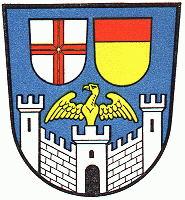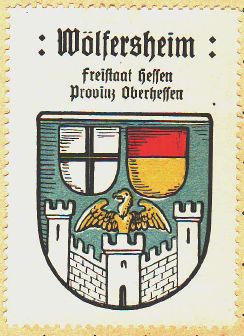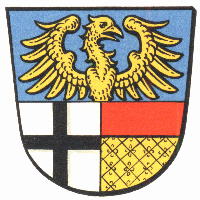Wölfersheim: Difference between revisions
Knorrepoes (talk | contribs) |
Knorrepoes (talk | contribs) m (Text replace - "|width="15%"|50 px|right |}" to "|width="15%"|50 px|right |}<seo title="Wappen, Gemeindewappen" />") |
||
| Line 3: | Line 3: | ||
|width="70%" align="center" |'''Heraldry of the World<br/>Civic heraldry of [[Germany]] - [[Deutsche Wappen|Deutsche Wappen (Gemeindewappen/Kreiswappen)]]''' | |width="70%" align="center" |'''Heraldry of the World<br/>Civic heraldry of [[Germany]] - [[Deutsche Wappen|Deutsche Wappen (Gemeindewappen/Kreiswappen)]]''' | ||
|width="15%"|[[File:Germany.jpg|50 px|right]] | |width="15%"|[[File:Germany.jpg|50 px|right]] | ||
|} | |}<seo title="Wappen, Gemeindewappen" /> | ||
'''WÖLFERSHEIM''' | '''WÖLFERSHEIM''' | ||
Revision as of 18:54, 5 November 2012
| Heraldry of the World Civic heraldry of Germany - Deutsche Wappen (Gemeindewappen/Kreiswappen) |
WÖLFERSHEIM
State : Hessen
District (Kreis) : Wetteraukreis (until 1973 Friedberg-Hessen)
Additions : 1972-4 Berstadt, Melbach, Södel, Wohnbach
Official blazon
Origin/meaning
The arms show two shields, the right one with the cross of Trier, the left one with the arms of the Lords of Münzenberg. The lower part shows a falcon on a castle. The town was given first privileges (rights) by Werner von Falkenstein, Archbishop of Trier. The lower part thus would be a canting symbol for the bishop (Falk=falcon, Stein=stone), which also explains the cross of Trier. The Von Falkenstein family, however, did not use a falcon in their arms. The falcon is either meant really canting, or is derived from a 15th century image in which imaginary arms are shown for the bishop. The Von Münzenberg family ruled large parts of the Wetterau region in the 12th-14th century. They were succeeded by the Lords von Falkenstein.
The image below shows the arms as shown in the Kaffee Hag albums of the 1930s, with as a cross the black cross of the Teutonic Knights instead of Trier.
In 1956 the arms below were proposed to simplify the arms from the seal. The proposal showed a falcon rising from the division line, with the smaller arms in quarters below. Even though this proposal is heraldically more correct, it was never adopted by the town.
Literature : Stadler, K., 1964-1971, 8 volumes; Hessisches Ortswappenbuch, 1956.



